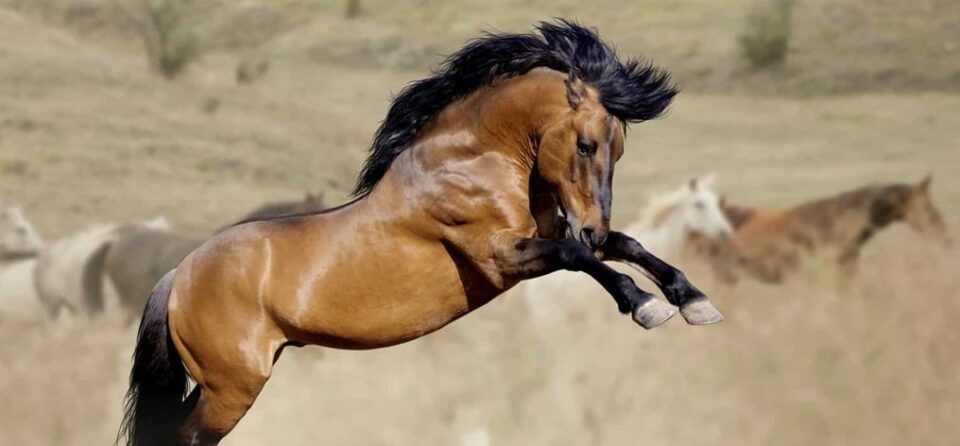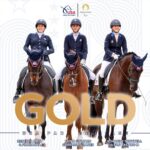
Guidelines from Dr. Getty on feeding the horse in transition to domesticated
If there’s one thing we can say about the benefit of being wild (or feral, in healthful surroundings) is that in most circumstances horses which have been free to roam open lands are often healthier than domesticated horses. Think about their diet for starters—they have so much variety—grasses, flowers, berries, leaves, seeds, fruits—providing all the nutrients their bodies need. Once they leave this natural setting, however, they typically eat only hay and it’s the same hay every day. Hay is dead grass and no longer contains the vitamins found in their previous, varied diet. The horse’s nutrition gaps will need to be filled in order to match the rich nutrition of the wildenvironment. Therefore, to fill in the nutritional gaps:
- Provide a comprehensive vitamin/mineral supplement along with chia seeds and ground flaxseeds for omega 3s
Horses in the wild rarely experience colic. One of the main reasons for colic in the domesticated situation is the rapid change from one feed to another, leaving the bacterial hindgut population little time to adjust. These microbes are responsible for digesting the fiber found in forage (hay and/or pasture) and need to be protected. To help your new horse’s digestive system adjust:
- Feed a potent probiotic that contains billions of colony forming units (CFUs)
Ulcers are common in domesticated horses, especially when transitioning to a new environment. Horses are trickle feeders – they need to graze continuously to keep the digestive system functioning normally. That means they should have quality hay 24/7. Horses are awake and moving most of the time and will take 15 to 20 minute naps intermittently throughout the day and night. The best way to protect your new horse against an ulcer is to:
- Feed him in sync with his natural instinct to continuously graze by giving him hay, free-choice
Many wild horses get adopted when they are young. They require the variety of feed sources that they had in the wild that offered quality protein, fat, vitamins, and minerals to support new growth. To accomplish this, add some alfalfa to your horse’s diet (about 30% of the total hay ration), along with either a supplement or a commercially fortified feed. Avoid cereal grains (oats, corn, etc.) and molasses – they can interfere with normal bone and joint development. In general:
- Feed growing horses extra protein, vitamins and minerals, chia seeds and ground flaxseeds to provide omega 3s, while avoiding high amounts of starch
Respect your horse’s need to roam, along with other horses. Naturally curious, they enjoy seeking out feed in various locations, feeding their bodies, but also providing movement to keep the digestive tract muscles in good tone. And being prey animals, they depend on the companionship of other horses to protect them against threats, real and imagined. This transition phase can be stressful – new sights, smells, people, and other animals can create a hormonal response that can lead to a variety of health problems, including ulcers, colic, and laminitis. All of these can be avoided by making slow adjustments, filling in nutritional gaps, and doing as much as possible to simulate a natural setting. In other words…
- Feed him like he was meant to be fed – like a horse.
By Juliet M. Getty, Ph.D.
For Permission to Reprint
For permission to reprint this article, in part or in its entirety, please contact Dr. Juliet Getty directly at Gettyequinenutrition@gmail.com.



